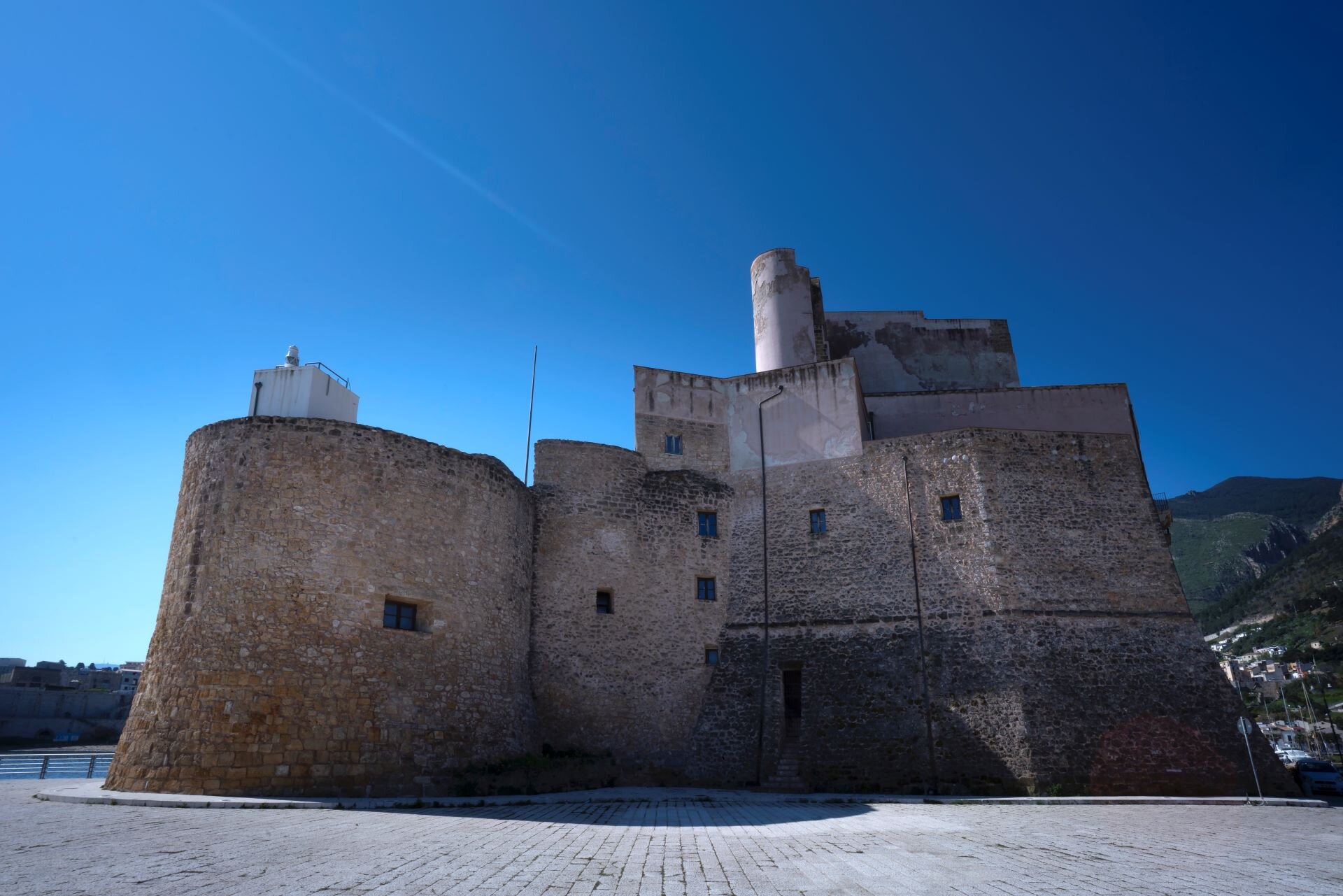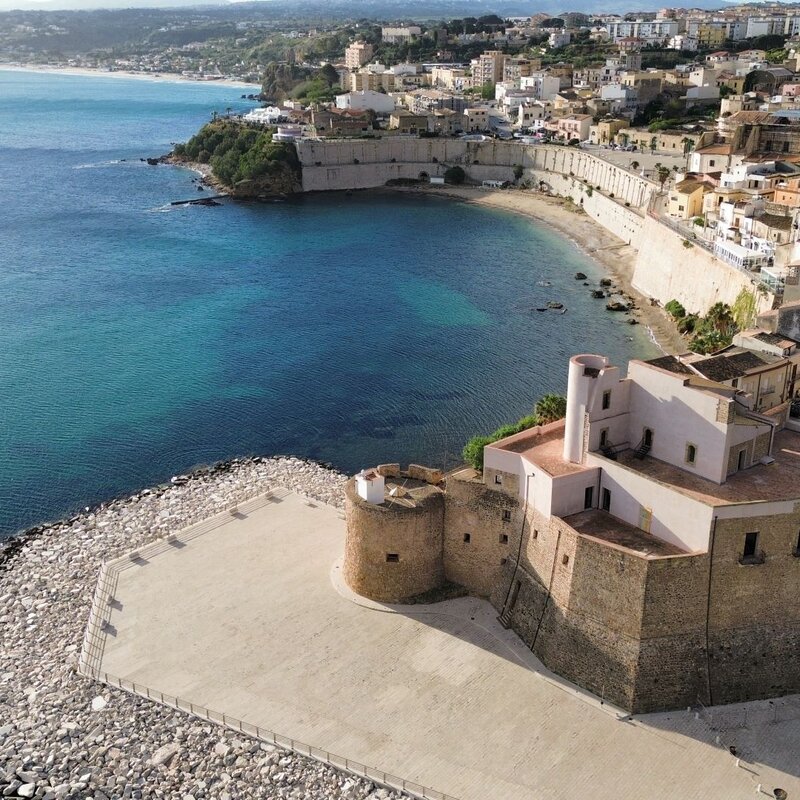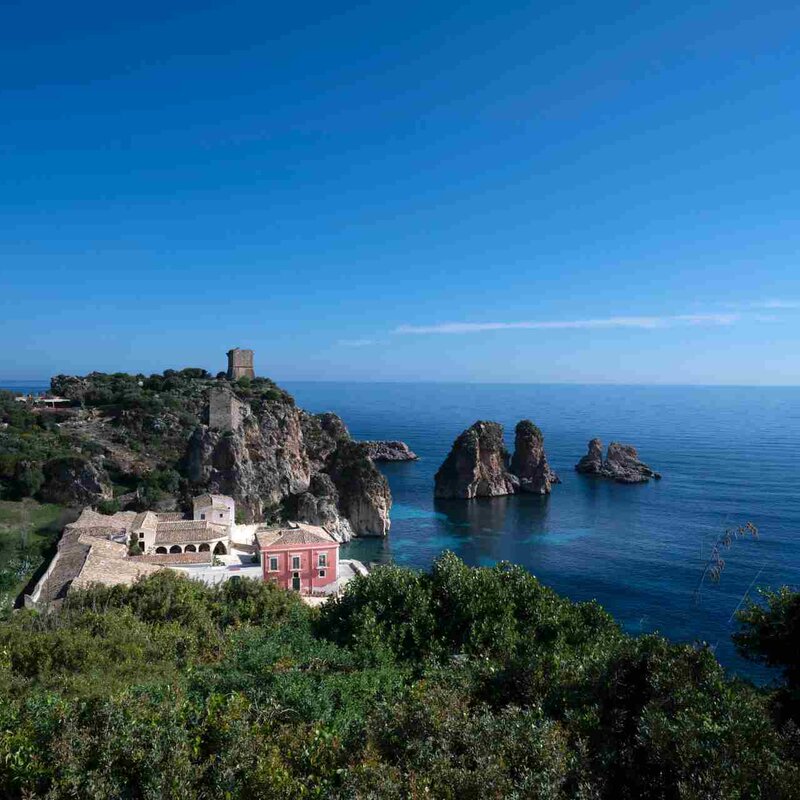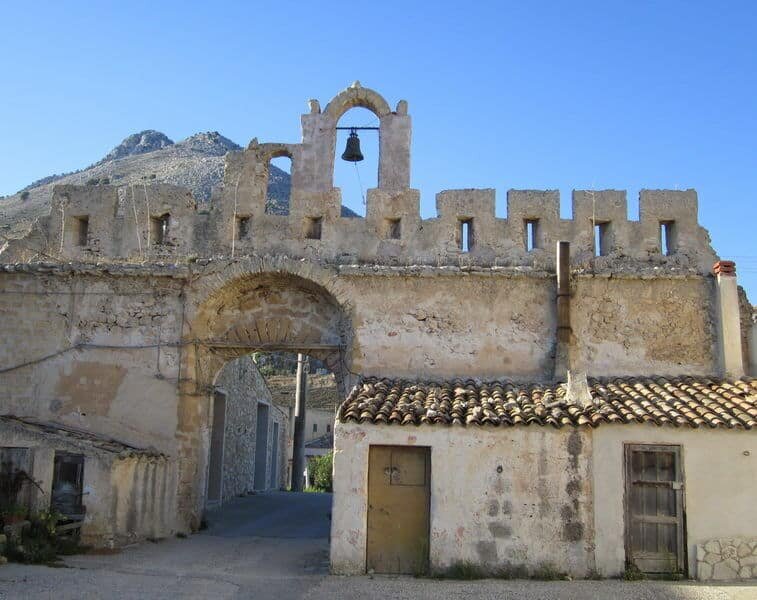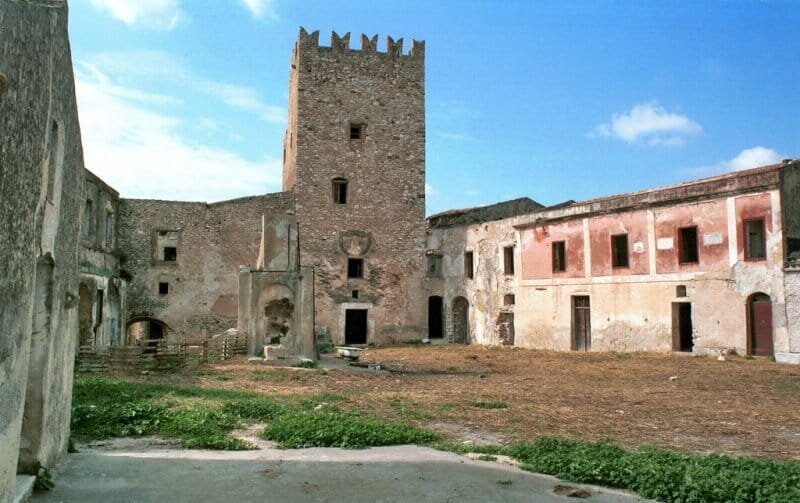Castles
Arab-Norman castle
A defensive bulwark stood at the same point as early as the 11th century, during the Islamic occupation of Sicily.
Defensive architecture reached its peak development in Norman and especially Swabian times, between 1072 and 1282. During the Aragonese presence, with Frederick II of Aragon, the castle was renovated and assigned to Frederick of Antioch.
Today, the castle is reached by crossing a nineteenth-century bridge. Originally, it was defended by a moat with a drawbridge. It has a polygonal shape and is distributed over three levels, with prominent battlements and merlon towers, the Bell Tower, and the San Giorgio Tower, the latter equipped with an internally spiral staircase of exquisite workmanship, and finally the Bulwark Tower, built in the 16th century.
On two lintels, on the eastern side, the coats of arms of the Luna and Aragona families (16th and 17th centuries) are carved.
Overlooking the sea is a cylindrical tower, at the foot of which is the so-called “Queen’s Bath,” a rectangular basin carved into the cliff, now covered by the harbor road.
